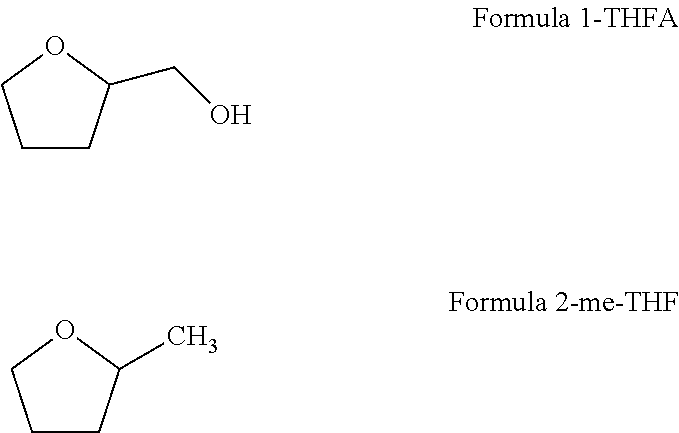Dewaxing buffer containing a water-soluble organic solvent and methods of use thereof
a water-soluble organic solvent and dewaxing buffer technology, applied in chemical methods analysis, instruments, withdrawing sample devices, etc., can solve the problems of inconsistent staining, limited performance of known buffer formulations and methods, and inability of some protein epitopes to bind complementary antibodies, so as to reduce the risk of sample loss or damage, reduce protocol time, and quick and efficient removal of embedding paraffin
- Summary
- Abstract
- Description
- Claims
- Application Information
AI Technical Summary
Benefits of technology
Problems solved by technology
Method used
Image
Examples
example 1
Working Buffer Formulations
[0049]The formulations of several dewaxing buffer working solutions are shown below Tables 1-3.
[0050]
TABLE 1Dewax Buffer - Low pHComponentVolume (ml)PercentCitrate Buffer0.50.98%ConcentrateDI Water49.596.59%PEG 2000.751.46%Triton X1000.250.49%THFA0.250.49%Total51.25100.00%
[0051]
TABLE 2Dewax Buffer - Medium pHComponentVolume (ml)PercentEDTA-HEPES Buffer0.50.98%ConcentrateDI Water49.596.59%PEG 2000.751.46%Triton X1000.250.49%THFA0.250.49%Total51.25100.00%
[0052]
TABLE 3Dewax Buffer - High pHComponentVolume (ml)PercentTris-EDTA Buffer0.50.98%ConcentrateDI Water49.596.59%PEG 2000.751.46%Triton X1000.250.49%THFA0.250.49%Total51.25100.00%
example 2
Working Buffer Formulations
[0053]The formulations of several concentrated dewaxing buffer reagent solutions are shown below Tables 4-6.
[0054]
TABLE 4Dewax Buffer - Low pHComponentVolume (ml)PercentCitrate Buffer1515%ConcentrateDI Water4848%PEG 2002222%Triton X1007.57.5% THFA7.57.5% Total100100.00%
[0055]
TABLE 5Dewax Buffer - Medium pHComponentVolume (ml)PercentEDTA-HEPES Buffer1515%ConcentrateDI Water4848%PEG 2002222%Triton X1007.57.5% THFA7.57.5% Total100100.00%
[0056]
TABLE 6Dewax Buffer - High pHComponentVolume (ml)PercentTris-EDTA Buffer1515%ConcentrateDI Water4848%PEG 2002222%Triton X1007.57.5% THFA7.57.5% Total100100.00%
example 3
Dewax Buffers
Paraffin Solubility Testing
[0057]The purpose of this set of tests is to understand the role that tetrahydrofuryl alcohol and polyethylene glycol have on the solubility of paraffin in an aqueous buffer solution. The Dewax HIER buffers have been formulated such that paraffin is partially dissolved during the HIER process. The paraffin is removed from vertically immersed slides during HIER in the PT Module. Upon cooling, the paraffin partially re-precipitates, but to a much lesser degree than in with other known dewaxing buffers.
[0058]Because the PT Module requires slides to be in a vertical orientation, it is required that paraffin become completely dissolved into the buffer during the higher heating steps of the HIER process (that is, above 85 degrees C.). During this high heating phase, the paraffin melts away from the slide. If there is no additive in the buffer solution to encourage solubility of the paraffin, it will simply pool at the top surface of the buffer, like...
PUM
| Property | Measurement | Unit |
|---|---|---|
| boiling point | aaaaa | aaaaa |
| vol % | aaaaa | aaaaa |
| temperature | aaaaa | aaaaa |
Abstract
Description
Claims
Application Information
 Login to View More
Login to View More - R&D
- Intellectual Property
- Life Sciences
- Materials
- Tech Scout
- Unparalleled Data Quality
- Higher Quality Content
- 60% Fewer Hallucinations
Browse by: Latest US Patents, China's latest patents, Technical Efficacy Thesaurus, Application Domain, Technology Topic, Popular Technical Reports.
© 2025 PatSnap. All rights reserved.Legal|Privacy policy|Modern Slavery Act Transparency Statement|Sitemap|About US| Contact US: help@patsnap.com



